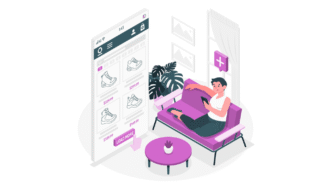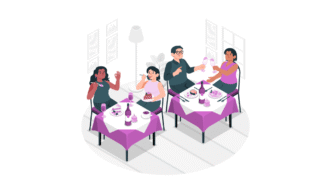LESSON OVERVIEW
The main objectives of this lesson are to:
- identify and talk about scenarios of miscommunication;
- watch and discuss a funny ad for project management software;
- analyse effective communication tips for avoiding misunderstandings.
This lesson focuses on speaking about misunderstandings. Students define a communication problem at work, brainstorm situations that might cause miscommunication and discuss tips on effective communication in various situations. They also watch a short ad and develop situations using the snowball effect idea.
60 minSpeaking ClassUnlimited Plan
This is a Speaking Class worksheet. It includes a variety of tasks that let your students practise their speaking skills. This lesson format does not focus on grammar or vocabulary. Learn more about it here.
SPEAKING ABOUT MISUNDERSTANDINGS
This lesson starts with a warm-up in which students complete a sentence in three different ways using at least one word from the word cloud each time. The word cloud consists of words related to communication (e.g. clarify, argue, communicate, etc.). After that, they discuss a list of things that might cause miscommunication and how common they are where they work (e.g. language barrier, shyness, technical issues, etc.). Then, students choose a situation that might be more likely to cause a misunderstanding (e.g. communicating via email OR having an online meeting with many participants) and explain their choice by giving examples. Afterwards, they examine situations and imagine that they happened because of misunderstandings. Students brainstorm and discuss what they think happened in each situation.
VIDEO AND MORE DISCUSSION
In this part of the lesson, students watch a short ad for project management software for builders. They discuss questions about their opinions on the ad, software effectiveness for better communication, ‘snowball effect’, and work-related experiences. Afterwards, students move on to speak about misunderstandings and develop various situations through the snowball effect idea. Following that, students analyse some tips on effective communication in various situations like presentations, meetings, and giving/receiving instructions. They choose the ones that are or would be the best in helping them avoid miscommunication at work or in another area of their life. Students can also add more tips of their own.
Subscribe to unlock these and many other Standalone lesson lesson plans with the Unlimited planWORKSHEETS














great lesson!
Thanks, I’m glad you liked it 🙂
Again, very teacher friendly and, more importantly, speaking friendly. It has, I think, an appropriate amount of text and familiarity of topic to offer practice to multiple levels. Of particular use were the colored boxes that had them choose between two regarding which would be more likely to cause misunderstanding/miscommunication. Thank you!
Great, thanks for such a detailed feedback!
Teacher’s version and Student’s version files are the same.
Hi! It might seem like it because they are very similar 🙂 There’s only one note for teachers in ex. 5 in a Teacher’s version 🙂